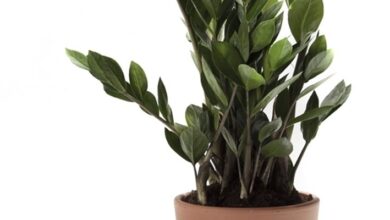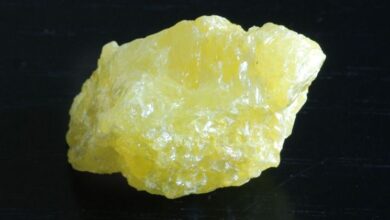What is mummification of fruits?

Although the term mummification almost automatically leads us to think of the Egypt of the pharaohs, the truth is that it also refers to something that happens to the fruits of plants. This is a fairly common problem, and also very serious, since it is difficult to eliminate the disease when the symptoms become visible.
And it is that these microorganisms first attack from inside the vessels – they would be something like the equivalent to our veins – of the plants, which is usually fatal for them by weakening them a lot. But… can preventive measures be taken to protect crops from mummification?
What is the mummification of the fruits?

Image – Wikimedia/ Ninjatacoshell// View of Monilia spores through a microscope.
Mummification (in botany) is a symptom caused by fungi of the genus Monilinia, which is why the disease is known as moniliosis. Specifically, there are two species that affect crops: Monilinia fructigena, which damages seed fruits such as almonds; and Monilinia laxa, which has a preference for drupe-like fruits such as apples.
Although all plants do everything their evolution dictates to protect their fruits, there is nothing they can do to prevent them from the possible damage that an unexpected hailstorm can cause, or those caused by insects or other animals when they try to eat them.
Fungi multiply by spores – their seeds – and those are tiny, almost invisible. In fact, we only see them well through a magnifying glass or microscope. In addition, they are extremely light; they do not need more than a breeze to be transferred to other parts. If they fall on a fruit that has been damaged, for whatever reason, even if it only has a micro-cut, it will infect it.
What are the symptoms of moniliosis?
Once the fruit has become ill, one of the first symptoms that we will notice is that a brown spot will form with rounded white dots distributed over the entire surface. From here, it is normal for it to fall from the tree, but this will not be the case. It will be a mummified fruit, which will remain hanging from the branch until something (the wind for example) or someone pulls it off.
The appearance it gives to the plant is sad, despite the fact that the rest of the parts of the plant remain intact. Perhaps you could see that the flowers blacken and fall, but in general the tree will be healthy… except for moniliosis.
What plants does it affect?

Image – Wikimedia/ Aroche
Unfortunately, mummification of fruits is a common problem that affects all species of the botanical families Rosaceae and Ericaceae. Some examples are:
- Apricot tree ( Prunus armeniaca )
- Almond ( Prunus dulcis )
- Cherry ( Prunus avium )
- Plum ( Prunus domestica )
- Apple tree ( Malus domestica )
- Peach tree ( Prunus persica )
- Quince ( Cydonia oblonga )
Treatment of monilia in fruit trees

Preventive
Prevention is better than cure, so let’s see what are the most effective preventive measures against mummification of fruits:
Do not prune unless necessary
The spores of the fungi do not need more than a micro-cut to reach the interior of the plants. For this reason, it is not advisable to prune unless it is really necessary; that is, if you have to cut dry or diseased branches for example, or if a complicated transplant has been carried out in which the roots have been manipulated a lot.
And in the event that pruning is necessary, disinfected pruning tools should be used. It is important to disinfect tools before and after use. Also, it is worth sealing the wounds with healing paste. In this way, the risk of contagion is minimized.
Buy healthy plants
If you go to a nursery with the intention of buying fruit trees and it happens that they have some fruits, make sure they are healthy, both they and the rest of the parts of the plants. Do not hesitate to inspect the leaves, the flowers, the trunk… Take the pot – if possible – and take a look at its base: if the roots come out it is a good sign, as it will mean that it has rooted correctly and that when transplant will have less trouble resuming growth.
Discard those that have symptoms of pests or disease, such as chewed, dried or curled leaves; yellow, white, brown or black spots on leaves and/ or fruits; lumps on the trunk that shouldn’t be there, and so on.
Healing
There are no curative treatments for monilia, hence I have italicized curative. What there may be is treating the flowers and fruits with fungicides that inhibit ergorestol biosynthesis (called IBS fungicides). It is necessary to follow the instructions specified on the package to avoid the risk of overdose.
We hope it has been useful to you .




